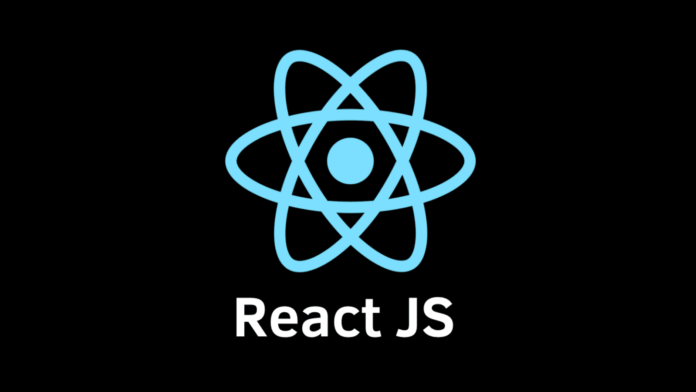
You’ve probably heard of React JS already, but in case you somehow missed it, here is a chance to fill in your gaps on this popular JavaScript library. React-based web applications are associated with greater safety, interactivity and increased performance while using complex user interfaces (UI) from isolated code snippets. It’s not too difficult to find resources online as they are abundant. Make sure you trust established sources like the official tutorial guide of React JS, which gives practical examples, and you can learn how to efficiently use ReactJS (also React.js) by coding directly.
From my experience working in a bespoke software development company with devoted ReactJS specialists, I know that ever since its initial deployment by Facebook in 2011 and on Instagram a year later, its influence on the whole JS ecosystem has been growing. Check dreamix.eu for more info. The top three features of React are its compatibility with other frameworks such as Angular.js or Backbone.js, one-way data binding using Flux for complex state management and its component-based structure that divides web pages into easily manageable code chunks. Plus, these components are reusable, which means a more convenient and fast software development process.
Now, let’s find out more about the essentials of ReactJS:

What is Special About ReactJS?
Although some think React is a JavaScript framework, it is actually an open-source front-end library for efficient, declarative and flexible development of software projects. The most essential React.js features are that it uses JSX (JavaScript XML), a syntax extension that allows UI visual description. JSX allows developers to code expressions using curly brackets, e.g. {variables, properties and functions}. Basically, every JSX object can be parsed just like a normal JavaScript but with HTML tags inside, e.g. if we declare a variable name = ‘Sophia’, with the power of JSX we can do something like element = <h1>Hi, {name}</h1>.
Moreover, ReactJS uses unidirectional data flow, meaning that data values pass from component to component as properties moving in a one-way direction. Also, React functions by making changes to a website’s DOM (Document Object Model), creating a virtual DOM that makes a copy of the real one. Because it would be inefficient to render the whole page’s DOM just to make small changes, React.js shows its users a virtual DOM copy and makes only essential changes, speeding up the app’s performance.
What are React Components?
The two main types of React components (parts of the UI) are class components and functional components. What these two have in common is that they divide the UI into smaller pieces that can both receive props (properties) and return HTML. These are usually reusable and process incoming input in the form of Props using the function render(). Class components consist of ECMAScript 2015, deriving at least one render()method from React.Component or React.PureComponent.
Using a function component is the easiest way to declare a single React component. As the name implies, it is basically a JavaScript function that also fulfils the requirements for React components. For a function to be valid, it has to possess an explicit null as a return- value or a valid JSX form. The function component receives a props-Object as a first argument. There are other component types such as HOCs (Higher Order Components), Dumb or Smart Components, Presentational, Container components etc., but we’ll not get into too much detail now.

Communication between React Components
Fundamentally, React.js is reactive, developers use components (essentially, these are also functions) that are logical parts of the UI that can be reused easily and adjusted as the user wants. There are three basic ways for data communication between various React.js components depending on their type – Parent (master), Child or Sibling. The communication from a parent to a child component happens through Props with specific parameters.
On the other hand, if the program has to send data from a child component to a parent, it uses the so-called Callback functions. The communication between sibling components is more interesting as it can appear in using various methods. The first one is to use a combination of props and callbacks to initiate data exchange. A second feasible option is to use Redux – another JS library used as a predictable centralised container for JS apps.
React States and Hooks
In the book Fullstack React you can find the complete theoretical explanations and practical examples on how to build a web application using ReactJS. As a UI library, React helps you create interactive experiences for the users, so you have to decide which components will stay static and which will be mutable. In React, this is called a state, and the key criteria is that a data component has to change over time to be considered stateful, e.g. a clock, a countdown timer etc. States can only be applied to class components.
The next React features are Hooks that make the internal logic between the application’s components reusable. The main goal of Hooks is to solve this by enabling developers to write functional components that have access to features like state, context, lifecycle methods, ref and so on without writing the class component. Before Hooks were introduced, this was typically managed with HOCs or complex render props.

React Comes with a Massive Ecosystem
As a software developer with JavaScript background knowledge, the learning curve for ReactJS won’t be too steep. One of the most essential benefits this library comes with is the big thriving community behind it. With thousands of GitHub source code repositories and regular updates, the React community is very active and always growing.
The global community is expected to grow further, so if ReactJS is still on your learning list but you haven’t pursued it yet, go for it. In case you have experience with JS, it will take you a week to grasp the main features and functionalities and you’ll be ready to utilise the vast opportunities this amazing UI library has to offer.
Author Biography Aleksandrina Vasileva
Aleksandrina is a Content Creator at Dreamix, a custom software development company, and is keen оn innovative technological solutions with a positive impact on our world. Her teaching background, mixed with interests in psychology, drives her to share knowledge. She is an avid reader and an enthusiastic blogger, always looking for the next inspiration.
















